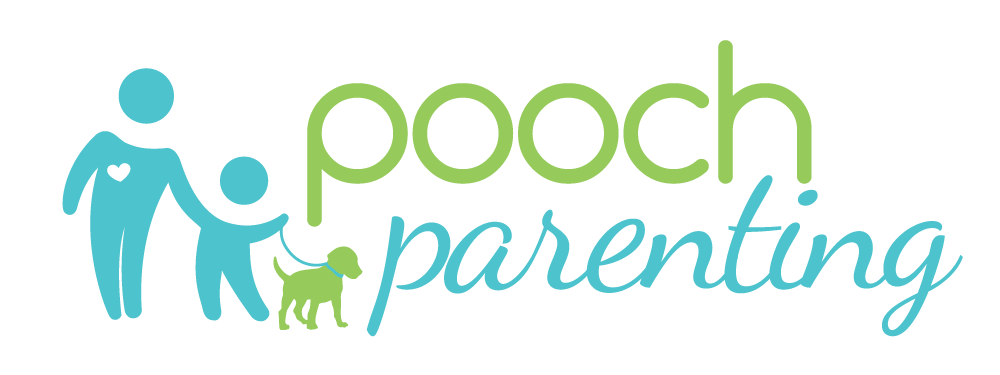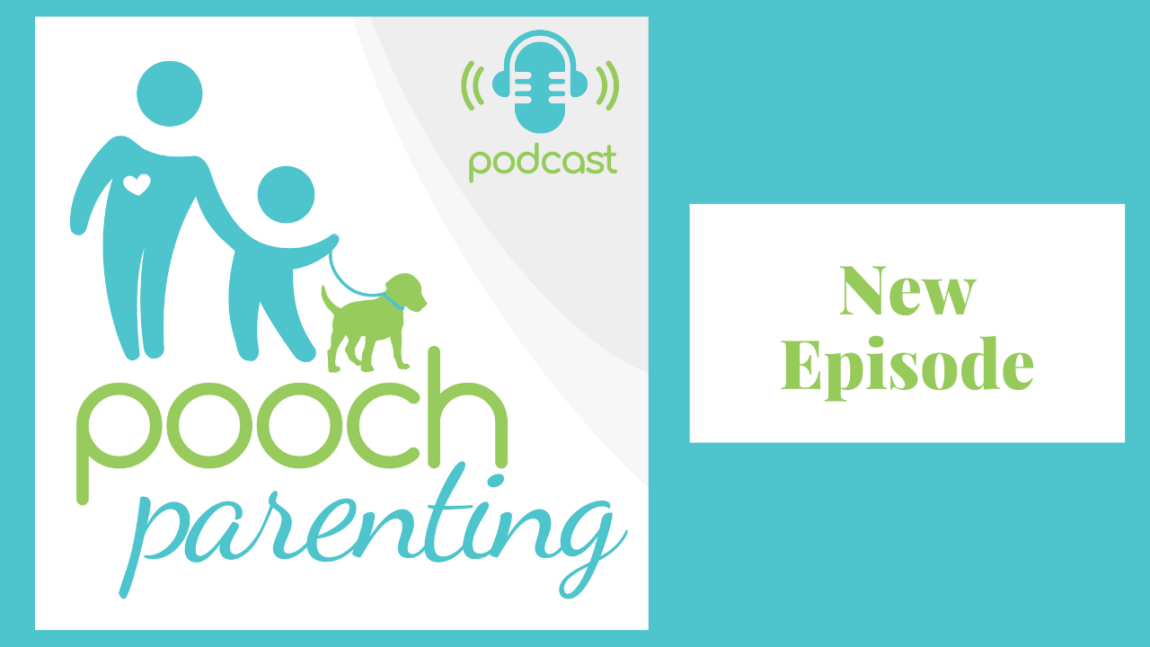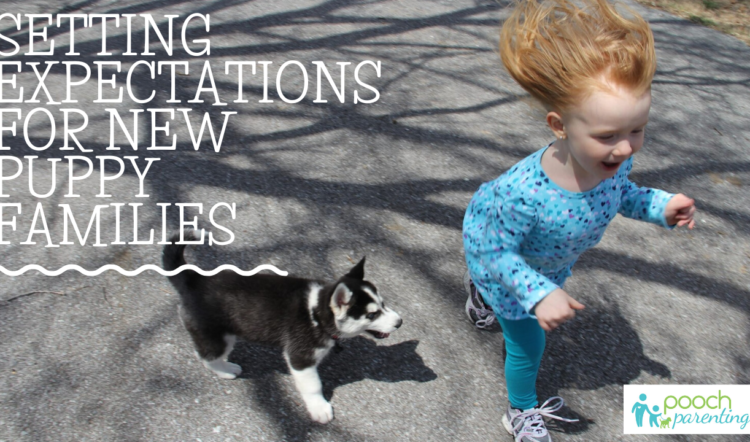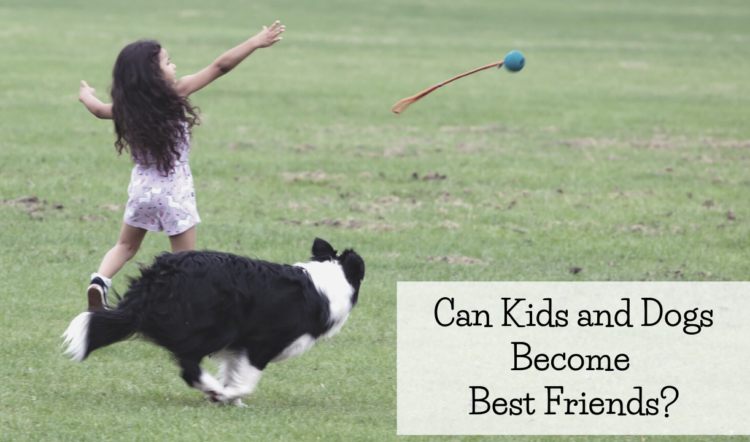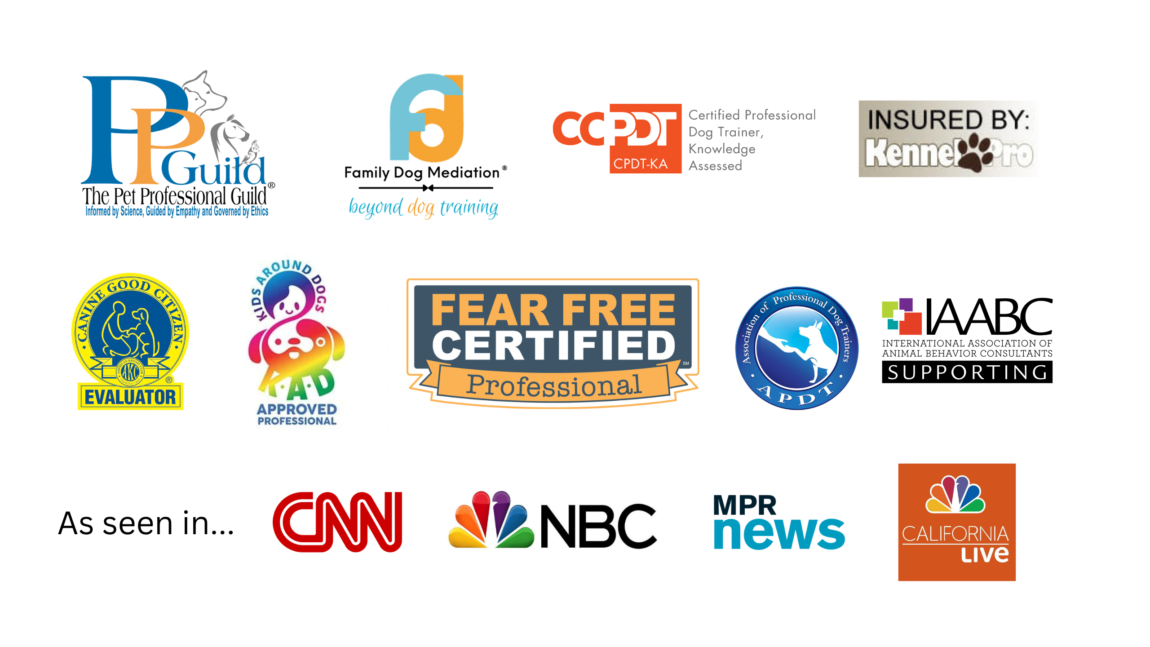This week, I talk with Michael Baugh, a Certified Dog Behavior Consultant and Trainer, about aggressive behavior in family dogs. We talk about how families should evaluate aggressive behaviors, identifying the causes for aggressive incidents, how to prevent them from happening again, and considerations for how to move forward.
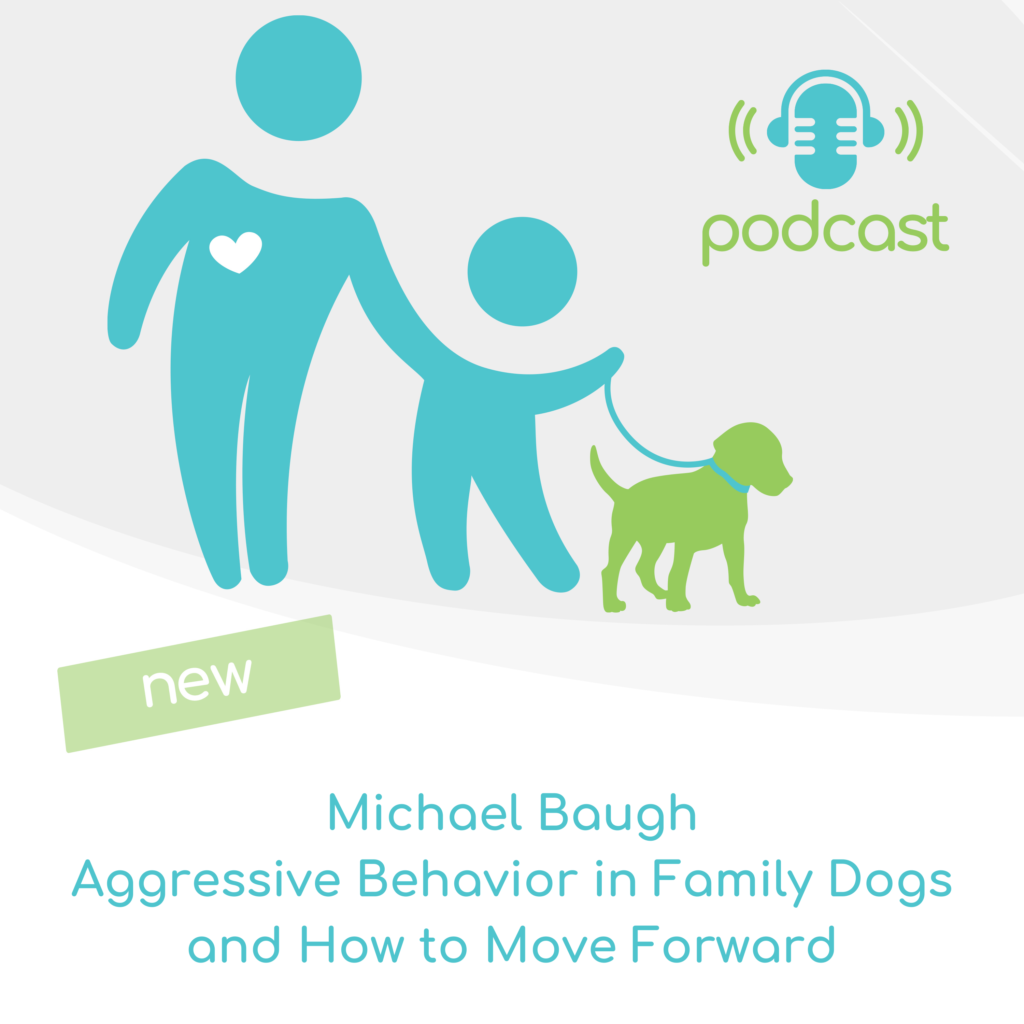
About Michael
Dog behavior expert Michael Baugh began his professional work with families and their dogs in 1999. He graduated with honors from the San Francisco SPCA Academy for Dog Trainers and the Karen Pryor Academy for Animal Training and Behavior. Michael has a degree in communications with a secondary concentration in psychology from Loyola University of New Orleans. He also studied community counseling at the Graduate School of John Carroll University.
Michael is the first full time dog behavior consultant and dog trainer in houston with these two independent professional certifications:
- Certified Dog Behavior Consultant (CDBC) – Awarded by the International Association of Animal Behavior Consultants (IAABC). This certification required multiple essays and case studies related to helping people who have dogs with serious behavior problems including aggressive dogs.
- Certified Professional Dog Trainer, Knowledge and Skills Assessed (CPDT-KSA) – Awarded by the Certification Council for Professional Dog Trainers. This certification includes a 250-question test assessing 6 core competencies in dog training. Additionally it included peer review of actual training and teaching (on video) to assess skills at well as knowledge.
Resources
- Michael’s Website: Michael’s Dogs
- Find Michael on Facebook
Transcript
- Why, why do dogs do these kinds of things that people perceive as aggressive? What is that even coming from in the first place?
- textbook definition and I like this definition, you know, of, of aggressive behavior and aggressive behavior is behavior that does harm or intends to threaten harm in order to make something else in the environment, go away, like get further away from me or to make something in the environment stop.
- if there’s a dog that you approach and it kind of looks at you and it maybe shows its teeth, we might say, Oh, my that’s an aggressive behavior. And in fact, we, we might look a little bit deeper and say, well, what’s the function. What’s that dog trying to communicate to me? Hey dude, stop, you don’t come closer or would you please go away?
- this behavior, although unwanted is within the bell curve, it’s not abnormal. It’s, this is how our dogs, you know, communicate with, with us.
- aggressive behavior, typically doesn’t come out of nowhere.
- there were some warning signals that were missed between the moment when the dog started to feel uncomfortable.
- So the warning signs we should celebrate. Right. Because that prevents something dangerous from happening.
- Michelle, I think you’ve, you’ve, I think you’ve got it absolutely right. You know, and if we’re lucky enough to get those warning signs, yes, we should celebrate. Those can be points of entry for us, but here’s the deal – a dog who is new to living with a baby may not give protracted warning signals.
- if you and I are working with a couple who just had a baby who started to move or sit up or scoot – these family dynamics are new to everyone. Maybe they’ve lived with, you know, Charlie, the terrier for four and a half years, and Charlie, the terrier has been a joy and never had a problem and never shown any kind of, those of those signals. Well, guess what? Charlie’s in a brand new world. Right. So everything’s different. So we may, we’re just getting the first sort of read on how Charlie deals with those situations. And he may not deal with it by giving us clear signals. Charlie may give a couple of quick warnings and to ask the little one to get away and then maybe give a quick punch with his muzzle or a nip.
- any kind of behavior, but let’s just say aggressive behavior – it’s not like some demon that lives inside the dog. And then all of a sudden it comes out. It’s an interaction with the environment. It’s a conversation with what’s happening in the world around them.
- And so Charlie, the terrier has never had a conversation in a room with a baby or a toddler in it. This is the first go. And so your client could say, my dog has been sweet and has never been aggressive for his entire life. And it can very much look like this came out of nowhere, right? Because this is the first conversation that that dog has had with this particular situation.
- So my heart goes out to clients who say, this came out of the blue and I get excited to share with them and teach them. This is a situation that we’ve never dealt with before. So it’s new to you and it’s new to the dog and yes, there may have been warnings, but they were probably too quick for you to catch, you know, or yes, the dog may have given sort of these ritualized aggression, you know, the equivalent of the dirty look in the grocery store, but we missed them. And yes, this is a two species process. We’re working with your dog and we’re working with you. And there is no shame. You are not a bad person for having missed these signals, especially the ones that came really quick
- some of these reactions that the dog might give were subtle and so quick that even if you’re not facing the exact right direction, you could miss them. So it’s so easy to have an accident happen. It really is. It is very easy to have this happen.
- So let’s say it does happen. Okay. Hopefully it’s nothing super bad. Maybe it was maybe the dog did what we call a muzzle punch, where it pokes the child with its nose or its teeth, or maybe it was a nip and not a dangerous bite. And the family is thinking, okay, what do we do next? How how do we work through this? Is it something that we now need to be terrified for the rest of everyone’s lives? Is this something we can work through? So let’s assume this was not a really dangerous incident, but we all consider it an eye-opener. I’m going to take off my Rose colored glasses and realize that everybody has feelings and the dog will express him or herself.
- In the moment, you know, when in that moment where we have a Disney-implied impression of what we thought life was going to be like with our dog. “Oh my gosh, we had this dog who we just think is adorable, who is our, it’s our first sort of surrogate child, and now we’re going to, and now we’re going to bring our real child into the world. And honey, isn’t going to be, isn’t going to be wonderful. We’re going to have a baby and a dog and a fireplace and a new house, and it’s going to be wonderful. Right? So the moment that that gets cracked or shattered, you know, if I was going to give one piece of advice, it would be, you know, first of all, you know, move the child away from the dog, but that’s, that’s, that’s kind of obvious, right. But after that, you know, is don’t panic, like take immediate action, make sure that your dog and your child are safe. And, and I would say, keep them separate for a period of time until we can definitely catch our breath and then we’ll get somebody in to help us.
- parents sometimes feel panic, like they need to make an immediate decision about how this is going to play out for the rest of their lives right now.
- We look at a couple of key factors and sometimes hard to remember in hindsight, but what happened right before the dog bit, the child, what was going on in the room? Where was the dog? Where was the child where on the child’s body, did the dog make contact? Was it on a hand, on an arm, on a face head? I see a fair amount of like right here (on the top of the head). And, and, and then ask can we, can we avoid that setup?
- then we, and then we start looking at if I bring a trainer or behavior consultant in to help that is qualified and able to help with these particular issues and, and start working on a plan
- I think a lot of people protest when I talk about management and they say, well, I don’t always want them to live apart that they can’t always be separated. They can’t always have a gate in between them or it’s not convenient. And there’s a story we tell ourselves about, like you said before about this Disney image of what we wish we had. And what we wish we had is that our dogs and kids are best friends and everybody is happy and safe
- my ears sort of prick when I hear anybody discuss managing the environment or managing the behavior as if it’s just something that we do in the short term, because managing behavior is part of the behavior change process. It is, it is not just, Oh, all we did is management. Okay. It’s part of the process.
- if we had workmen coming to the house today, for instance, my dogs would be up here in the office with me and they would be quiet the entire time. That’s, you know, again, over a couple of glasses of wine, we could argue, well, that’s just behavior management. And I’m like, well, no, it’s my solution to the problem. And then this is a long-term solution to the problem. I love having my dogs up here with me. I don’t want them downstairs, barking, or getting underfoot or doing anything with the workers. And, and the more our dogs practice a behavior, the better they’re going to get at it. The more likely the behavior is to recur again and the stronger, perhaps even the behavior is going to become.
- if I practice asking them to lay down on their bed, that’s going to get really strong and they get really good at it. And if they practice biting your kid or, or chasing him and nipping at his heels, when he’s old enough to start running there, they’re going to get good at that too. But if they’re in another room behind the baby gate with the chew toy when the house is at the peak of its craziness, then they’re not getting good at that behavior. They’re not getting good at harassing the kids. And, you know, and they’re not under that level of stress.
- management is just so very important, but it’s, it’s also really, really good training. You know, it’s really, it’s a good, valuable part of the training process. I had to choose between,I’m going to keep my dog behind a baby gate, or I’m going to have my dog go live with someone else. Oh yeah. I’m gonna keep my dog. Right. And then they’re going to be behind the gate and we’ll work that out. Right. You know, and, and there’s probably other things that we can do. The other thing is, is that your toddler is not going to be a toddler forever. Your toddler is going to grow up and your dog is still going to be around.
- And every developmental stage that your child goes through is like a brand new entity for your dog.
- I would love to talk about some hard choices. So you talked about panic and there is a lot of panic. I get calls from people who are crying calls from people who I got one the other day in hysterics saying, do I have to put my dog to sleep because she bit my daughter. And I said, no, your dog doesn’t have to die for making a mistake. You know, let’s talk about the circumstances. Why, why did your dog bite your toddler? And what could we do to prevent that interaction from happening so that your dog felt that it needed to bite your toddler?
- So there are dogs that aren’t wired right. It doesn’t happen that often, but there are dogs that don’t use gentle corrections to children that are more assertive that maybe bite and shake, or don’t let go or go kind of beyond what you and I would consider maybe the normal range of puppy, you know, teething or whatever. So can we just talk a little bit about this: How does a family know what is manageable? Because I have to say that as much as I love management, management sometimes fails, especially if there’s kids in the house who forget to latch a gate. How do we, how do we gauge the seriousness of this and whether or not we need to evaluate if this is the right dog for your family. I know this is a giant question.
- I know parents are taking a lot of classes and they’re getting ready for this change in their lives, in a lot of different ways. This should be one of the ways that they’re thinking about getting, getting the family ready and their dogs included. So, you know, as a practitioner or a behavior consultant that handles cases day in and day out where, you know, dogs have behaved in threatening or dangerous ways, you know, there are a number of factors that I, that I look at the three that come immediately to mind are:
- we identify other situations that might have been similar (Oh, you know, yeah, he’s not really comfortable when X or Y is occurring). So for instance, some dogs get very uncomfortable if you’re, you know, like right in their face, you know, or making direct eye contact with them, not all dogs, some dogs, some dogs have sensitivities and sort of flinch away, or maybe they’ve growled in the past when, when people, you know, reach for them, maybe their ears are sensitive. There’s a number of, sort of what we referred to as usual suspects,you know, certain things that are typical triggers for dogs, you know, sort of across the board.
- And then the first thing we look at is, so the first thing is the intensity of the bite. So, you know, as a behavior consultant, we look at the bite intensity.
- The second one we look at is, is the triggers. Can we identify what sets this dog off? If we can, we’re in fairly good shape, if they’re fuzzy or there’s just a bunch of stuff that sets that dog off, then we’re not as in good shape.
- And then the third factor is the, is the human factor. You know, how much mental, real estate do they have to take on an issue like this. New parents do not have a lot of time to train their dogs. It’s just a fact, right? You got a lot of stuff going on trying to figure out this whole mom and dad thing, you know, and now I need to become sort of like a, you know, a part-time dog trainer on top of it all, you know, doable, doable, but can be challenging.
Sketchy prognosis:
- So if we have a, just as an example,if we had really bad, hard bite had to get stitches, going to get plastic surgery, probably still gonna have a scar into adulthood, you know? Yikes.
- If the triggers are sort of like, I don’t know, man. I mean, he just seems on edge every time the kids in the room, you know, kind of thing. Yikes.
- And by the way, you know, I don’t have any time or attention to this and my husband never really liked the dog anyway. Yes. Yeah. Right. Right. Those, those, those set us up for a really crummy prognosis and there’s other factors, you know, there’s other factors that we look at in terms of prognosis as well. But those are the big three that come to mind for me.
Promising Prognosis:
- on the flip side, left a red Mark and some spit on this cheek, it’s only when the kid pulls up on the sofa and that just started happening next week. And the dog was sitting right on the soap and the kid pulled up. First time I saw it happen, the dog kind of showed his teeth and I moved my son second time. And then he did it, did it again. And then he’s kind of got them on the cheek and it, it kind of left a red mark and there was some spit there. I don’t know, maybe a little Mark where I saw his tooth fit, you know? And that’s the only time I’ve ever seen that happen. Otherwise my dog is really pretty chill and I’m all in, you know, then your prognosis is going to be a little bit better, you know, we’re going to be in better shape to move forward.
- Yeah. I like that. You said that I like, I like that you differentiated the families who feel that they have the bandwidth and the capacity to cope with the situation versus the ones that need to just have the honesty to say, I am so tired. I’m so tired. I’m so overwhelmed. I don’t know that I can do this because I think that at the end of the day, the ultimate success that the family has is based on what capacity they even have to make progress.
- I also highly respect the people who say, I don’t know if I can do this because they’re not setting themselves up to fail. And I just want to highlight that that takes guts. And it takes, I don’t know, a lot of gumption to say, you know what? I have to take care of myself because that’s the only way that I can parent and raise my family and that that’s not a failure. If the dog is really uncomfortable around your children, then there’s a very good chance your dog could live a really happy life in a family that didn’t have any
- I actually don’t make decisions for my clients. It’s always, it’s always your decision and it, and it may be, it may be a decision between crappy option one crappy option B and crappy options seat. And, and, you know, I, I have had, you know, thankfully, you know, in 22 years, I can still remember all of the behavioral euthanasia decisions that my clients have, you know, have made. And, and I make myself available of course, you know, to hear them out as they make that decision. But I will tell you this. And I, you know, I liked that you mentioned, you know, the dog might be happier and live a better life in another home. That’s absolutely true. I’ll tell you what my bias is. I recommend that folks as a first option, look to their family and friends. I had a client where I literally only saw this client once. It was just so crystal clear, it was a little dog, it was a newborn baby. The newborn baby had only been home a couple of days. And the dog just made it very obvious that he did not like the idea of there being a newborn baby in the house. Like he would jump up on the sofa and like bark at the parent holding the baby, you know, at the baby though. Yeah. And they had a very, they had a very fortunate situation in that mom and dad lived in the same city and the dog just went to go live with mom and dad, so they could still visit, visit their dog.
- my bias is to keep the dog in the home where they currently are, if that’s possible, especially when we’re talking about euthanasia, because euthanasia is final. Like there is no undoing that, okay. And, and so that’s one option is we look at all the options and then if they’ve already made the decision and whether I agree with it or not, if they’ve already made the decision, it is my job to support my fellow human being. If you’ve, if you’ve made a decision that is so has such weight to it, I just trust that my client has already gone through the options and, and made what they think is the right decision for, for their own family. And there is no value at all in my trying to mansplain the amount of it. There’s just not. And so why would I add additional pain to an already painful situation by, you know, by playing devil’s advocate? You know, it just doesn’t seem, it doesn’t seem like a kind option. And honestly, in all of the cases that, that have ended with euthanasia, you know, I have not had, you know, serious disagreement about really any of them.
- You know, one of them, one of them was like, you know, I literally showed up at an appointment for a second meeting with my client. There are no children in the household. I rang the doorbell, the woman answered the door, she was bleeding and crying. Oh. And her dog was barricaded behind a door. Like she had literally had to take a nightstand and like block the dog and crawl out of the room and shut the door. That’s a horrible way to live. And her husband was on the way home. And I, drove the client to the urgent care and her husband took the dog to the veterinarian. Like that was a very clear one. Right? Most of them, most of them are not, most of them are not. So, you know, not so clear in a very lots and lots of subtle shades in between. I agree.
- Yeah. I agree. The only time that it’s really come up for me in, in a conversation with a client is when we feel that the dog is a ticking time bomb, that something is going to happen. And if rehoming the dog means that that bomb will go off just somewhere else, then you’re not fixing the problem. You’re just forcing someone else to deal with it instead of you. And I, I don’t think that that’s necessarily a responsible thing to do, but that said, it needs to be a pretty significant circumstance for that still to be on the table.
- And most parents aren’t in that circumstance. Most parents are faced with things that are uncomfortable and that scare them. But with the guidance of a very compassionate trainer like you, or I do consider myself to be really compassionate as well, that that we can help them get through each day with more confidence and less fear so that they don’t feel like they’re putting their kids at risk.
- I think it was Karen Pryor who said at a public event, and this is literally what changed by my, my course to wanting to work with aggressive dogs: she said, or she wrote, you know, “it’s just behavior.” Whether a dog jumps up on you to greet you or steal something off the counter or bites your neighbor,if those are just actions, they’re just actions. And they play by the exact same rules. If any other behavior, there’s an element of the environment that, that either cues it or sets the dog up to perform that behavior, the behavior occurs. And then there’s a function of the behavior. That’s something that drives the dog to be like, Oh, that worked for me, you know? And then, and then to keep doing it again. So if we know that it follows the same rules of behavior, then yeah.
- Bring your, bring your behavior management to the table, bring your, you know, functional assessment to figure out what the drivers are, bring your differential, reinforcement, teach the dog to do other stuff, teach the dog how to relax, teach the dog that I’m safe. And when kids are around, it’s good news for me. Yes. Nobody’s going to come pull my ear or ride me like a pony, but chicken may fall from the sky. Yeah. That’s the, that’s the hopeful part, you know, that, that we can actually influence, especially, you know, especially for a dog who kind of like, yeah.
- It’s amazing to see an animal change. It’s amazing to see a human change early, more than anything, but it’s, it’s amazing to see a dog sort of like brighten up and go, Oh, yo, a little Teddy. That’s cool. He’s doing all right over there. I’m going to hang out behind my gate, just watch you, but I’m okay with it now, you know?
- So there’s hope. Just huge kudos to the parents that are brave enough and asking for the support that they need, because it’s really easy to just suffer in silence and reaching out has solutions.
If you enjoy these episodes or feel like they have made your family safer and less chaotic, feel free to buy me a coffee as a way of saying “Thanks!”
